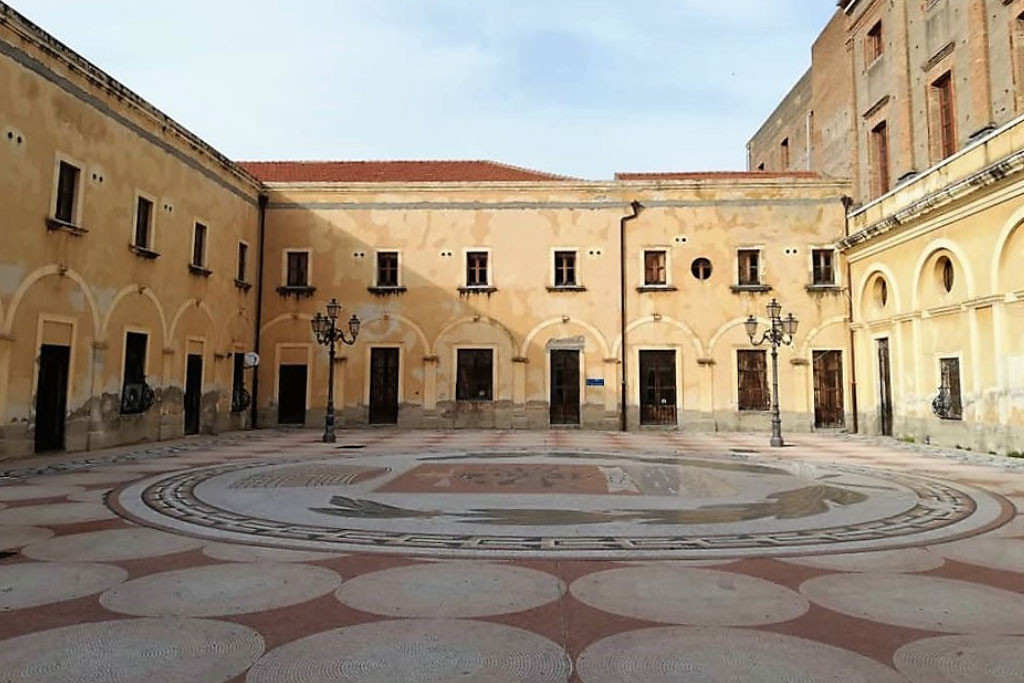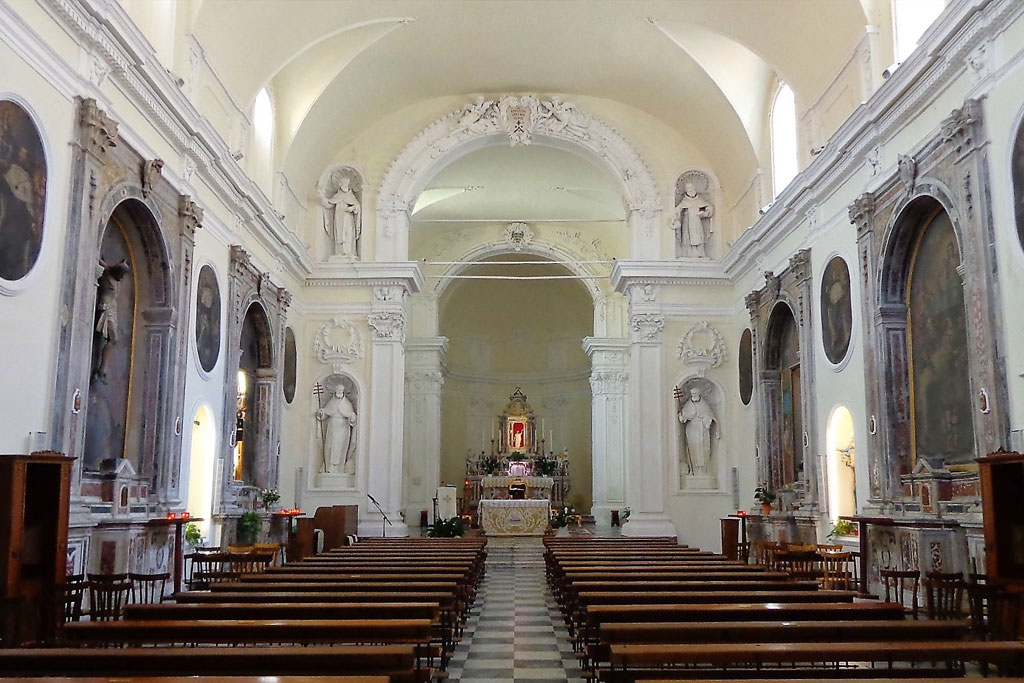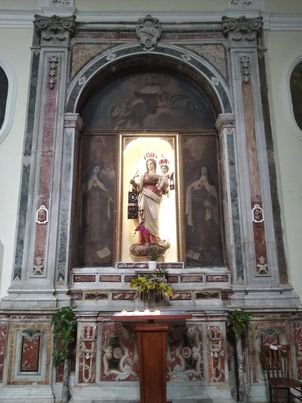Church of Carmine
The Carmine Church was founded around the 16th century on an area that today takes the name of Piazza Caio Duilio, previously occupied by two small temples dedicated to Our Lady of Consolation and San Filippo d’Agira. Around 1570, the church and its buildings were ceded by the nobles Giancarlo and Gianpietro Rigoles to Father Andrea Cordaro da Tripi to give life to the first Carmelite settlement. Between 1718 and 1719, when Philip V of Spain tried to reconquer Sicily to his rule, Milazzo was besieged by his troops.
On this occasion, this sacred building was largely destroyed, to be rebuilt in its present form between 1726 and 1752. In 1888 it was expropriated from the Carmelites, deconsecrated and then reopened to worship in 1927. The facade is unique and combines elements of rococo with attention to the recovery of the Renaissance heritage, giving rise to a product of the Messina baroque. It is surrounded by high walls with large Corinthian capitals that divide the church from the adjacent bell tower: on the walls runs an original curvilinear frame that supports, on the right, the bell tower. A single door with classical lines opens in the facade: it is adorned by Corinthian semicolumns and motifs festons in the architrave, surmounted by a broken tympanum with the central coat of arms of the Carmelite Order and that of the Baroni Baele, Ancient patrons of the temple. Above the door there is a niche containing a statue depicting the Madonna of Consolation that welcomes the souls under its mantle and representative of the historical – religious link with the primitive fifteenth century church.


The sacred building has a single nave with a large quadrangular choir, semicircular apse and six side altars framed by Corinthian parapets that support the stucco trabeation: on the left, after a case with the half figure of the Ecce Homo, there are the altars of SS. Cosimo and Damiano (with picture of the Madonna with Saints Cosimo, Damiano, Filippo d’Agira and Antonio da Padova), the Crucifix (with polychrome sculpture and canvas of the Marys), the Holy Family of Mary (with polychrome statue of the Madonna del Carmine and paintings depicting Carmelite Saints); on the right are the altars dedicated to the Souls of Purgatory (with a picture depicting the Holy Family with SS. Anna and Joachim and the Souls of Purgatory), to St. Lucia (with a picture of St. Lucia with the Madonna and Saints) and to the Madonna del Carmine (with polychrome statue of the Madonna della Pietà).
Alternate to the chapels are eight oval frames in stucco containing paintings depicting Carmelite saints. Two modest niches between the altars contain polychrome statues of St. Joachim and Christ the King. At the end of the nave, on the sides of the triumphal arch, are four niches with stucco statues of Holy Carmelites. The choir is accessed through the triumphal arch with dates 1752 and 1947: in the room is arranged the eighteenth-century canvas of the Madonna del Carmine with the Souls of Purgatory, attributed to Antonino Vescosi da Pozzo di Gotto. The high altar dates back to the end of the 18th century and is entirely made of polychrome marble, adorned by a central case and a pair of allegorical statues; in the front is a round with the Dream of Isaac. Two wall testimonies related to the ancient patrician tombs still survive: the sepulchral monument, with noble coat of arms, of the spouses Giovanni and Filomena Ciparo (1583) and the marble plaque, affixed between 1726 and 1727, which collects the ashes of the nobles Proto and remembers, in the Latin epigraph, the destruction of the seventeenth-century noble tomb following the siege of Milazzo in 1718-19.
